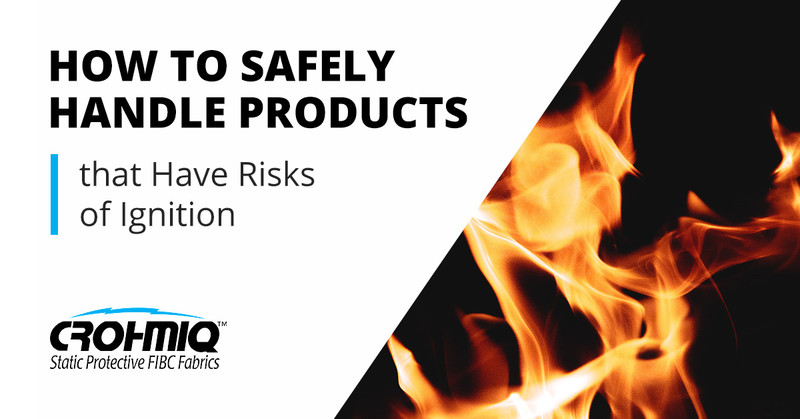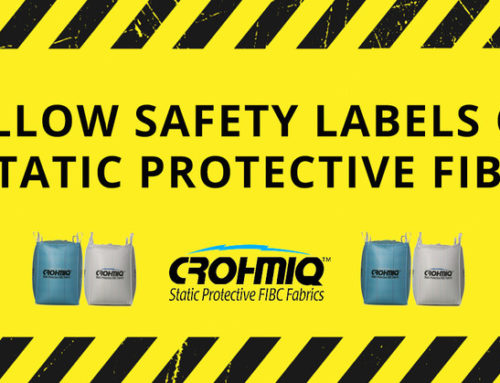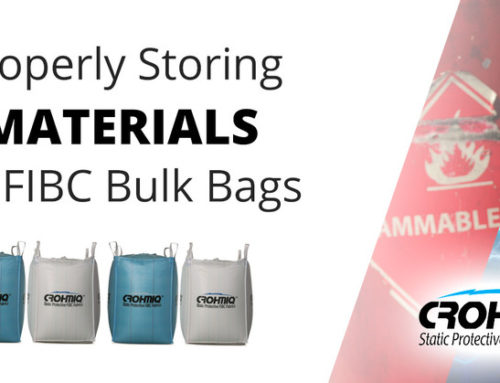Preventing accidents and minimizing risks of ignitions is critical to the safe and effective handling of potentially hazardous situations.
When the materials you work with produce dusts or vapors in a cloud form, they can explode if ignited (even if the base materials are normally not very combustible).
If you know what causes these explosions and what the biggest risks are, you will be able to maintain a safe working environment while effectively using your FIBC bags.
Understanding the Potential Ignition Factors
There are four different factors that contribute to the risk of ignition of flammable gas, vapor, and dust atmospheres. It’s critical to understand these elements in order to avoid potential risks from the very start.
-
Sensitivity of the surrounding flammable atmosphere – This is a measurement of how easily the gas/vapor/dust in the atmosphere can be ignited. Measured by the minimum ignition energy (MIE).
-
Charge generation – As certain particles or pellets separate from each other or come in contact with each other (or with an FIBC surface), a charge can be generated.
-
Charge accumulation – Charges can accumulate on isolated surfaces (whether conductive, dissipative, or non-conductive materials). How much of it accumulates needs to be measured.
-
Incendivity of the charge – There are 5 types of discharges that need to be considered: spark, propagating brush, brush, cone, and corona.
It’s also important to understand why dust from otherwise safe materials explodes at all.
It has to do with the rapid combustion of the dust particles. When these particles are grouped together in a mass, the burn would be considerably slower due to smaller surface area exposed to the atmosphere.
The dust or vapor from these materials create a situation which is the exact opposite, i.e. a lot of surface area exposed to the atmosphere. In this case, any ignition can lead to an extremely fast burn (you might say, explosively fast).
When you understand the whys and the hows of potential ignitions, it will be much easier to avoid them in the future.
Important Guidelines for Maintaining Safety
There are several things you can do to minimize ignition hazards and improve the safety of the work environment. This includes:
-
Assess the potential dangers and make sure you know what the MIE of your materials are and what could potentially ignite them.
-
Use the FIBCs that are to handle the filling and dispersing of the materials to minimize the chance of ignition.
-
Minimize the formation of dust clouds. This could mean getting products in pastes or pellets if they’re available or pouring dry materials in completely enclosed environments where the atmosphere can be controlled.
-
Control or avoid any potential ignition sources. Wielding, flame cutting, or other hot work or work that causes sparks needs to be tightly controlled and carried out only at specific times and in the prescribed ways. Hot surfaces, impact sparks, open flames, electrostatic discharges, and other ignition sources need to be spotted and eliminated if possible.
-
Know the environment where the materials will be handled. This means knowing how large dust clouds could become and whether the environment will be open or enclosed.
-
Periodically check the temperature of your materials that have been stored in bulk bags for extended time frames.
-
Store your materials according to the best practices. This means avoid storing in large quantities if possible, storing in well-ventilated areas, and ensuring that the necessary fire-fighting equipment is readily available.
-
Maintain any tools and equipment in the vicinity. Proper cleaning and maintenance can minimize the risks of sparks and flames that could ignite a dust cloud. Clean up any material spills immediately, and remove any obstructions that could impede the movement of the product.
Safety First
A dust explosion is extremely serious, and it can lead to destruction of property and injuries or even death on the job.
Take the time to understand why and how these ignitions can occur and what you can do to minimize the risks and maintain a safe environment. Use the right equipment and packaging to keep the area clear of potential hazards, and you can complete the job as safely and effectively as possible.





